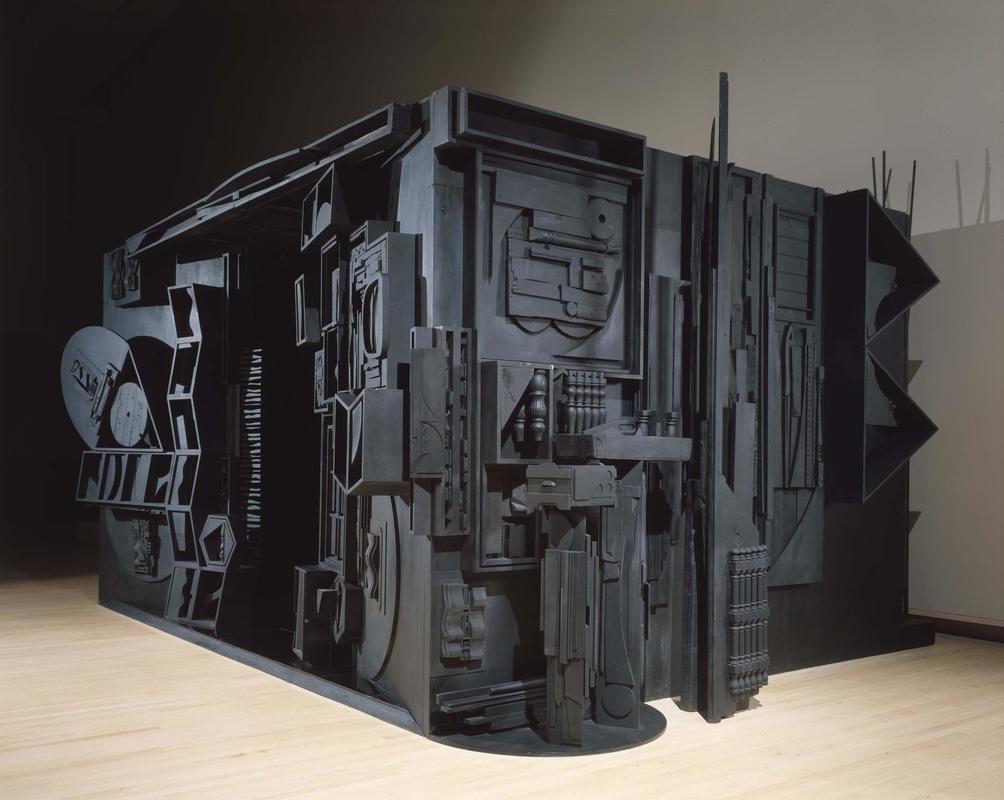More about Mrs. N's Palace

Sr. Contributor
Without windows, a door, electricity, or plumbing, Mrs. N’s Palace is more like a shanty, but to Louise Nevelson it was the “ideal habitat.”
Known as Nevelson’s “magnus opus," Mrs. N’s Palace exemplifies the artist’s discontent with social norms and and expectations. As a female artist working in the 1950s to 1970s, Nevelson was often sidelined by the mainstream modern art scene, which was more focused on her male contemporaries. Nevelson’s early work was frequently excluded from male-dominated art institutions, making her feel like an outsider in her own discipline.
Nevelson was condemned to live a life of domesticity, as was expected of many women at the time. But the home was a symbol of imprisonment for Nevelson. She had an unhappy marriage, postpartum depression, and seriously struggled with the demands of motherhood. Nevelson turned to sculpture to voice her frustration with the system and to regain an identity outside of her nuclear family. As a dark box covered in discarded household materials, Mrs. N’s Palace represents Nevelson’s feelings of being boxed-in by domestic life.
Nevelson,“Mrs. N” to her neighbors, spent thirteen years working on Mrs. N’s Palace, so we think it's worth discussing her creative process. She began by strolling the streets of her home, New York City, to find discarded household objects such as door knobs, banisters, chair backs, table tops, boxes, and cabinet drawers. Back in her studio, Nevelson would inspect each of her finds and paint them black. She saw New York’s debris as the “skin” of the city, which she could manipulate and bring back to life through art. By painting the objects black, Nevelson gave them a modern identity that better fit their new life purpose.
After she painted a variety of objects, Nevelson meticulously arranged the pieces into collages. She paid particular attention to patterns and repetition, creating sculptural collages that were engaging to look at and challenging to decipher. In 1977, Nevelson constructed Mrs. N’s Palace by combining numerous smaller collages into one massive sculptural box.
The completed abode was unveiled to the public on the artist’s 80th birthday and was rightfully met with immense acclaim. With Mrs. N’s Palace, Nevelson was full-heartedly welcomed into the public art sphere and escaped the constraints of domestic life once and for all.
Sources
- Hughes, Robert. “Sculpture’s Queen Bee.” TIME Magazine 117, no.2 (1981): 74-80.
- “Louise Nevelson: Mrs. N’s Palace.” The Metropolitan Museum of Art. Accessed May 23, 2021. https://www.metmuseum.org/art/collection/search/484216.
- NYC-ARTS. “NYC-ARTS Choice: ‘Mrs. N’s Palace’ by Louise Nevelson.” PBS. November 14, 2019. Video, 3:52. https://www.pbs.org/video/nyc-arts-choice-mrs-ns-palace-louise-nevelson….
- Siegel, Harmon. “The Black Wallpaper: Louise Nevelson’s Gothic Modernism.” Art Bulletin 99, no.4 (2017): 168-290.
- Wolfe, Shira. “Boundary-Breaking Sculptors of the 20th Century. How Louise Nevelson Redefined the Materials of Sculpture.” Artland. Accessed May 23, 2021. https://magazine.artland.com/boundary-breaking-sculptors-of-the-20th-ce… velson/.











